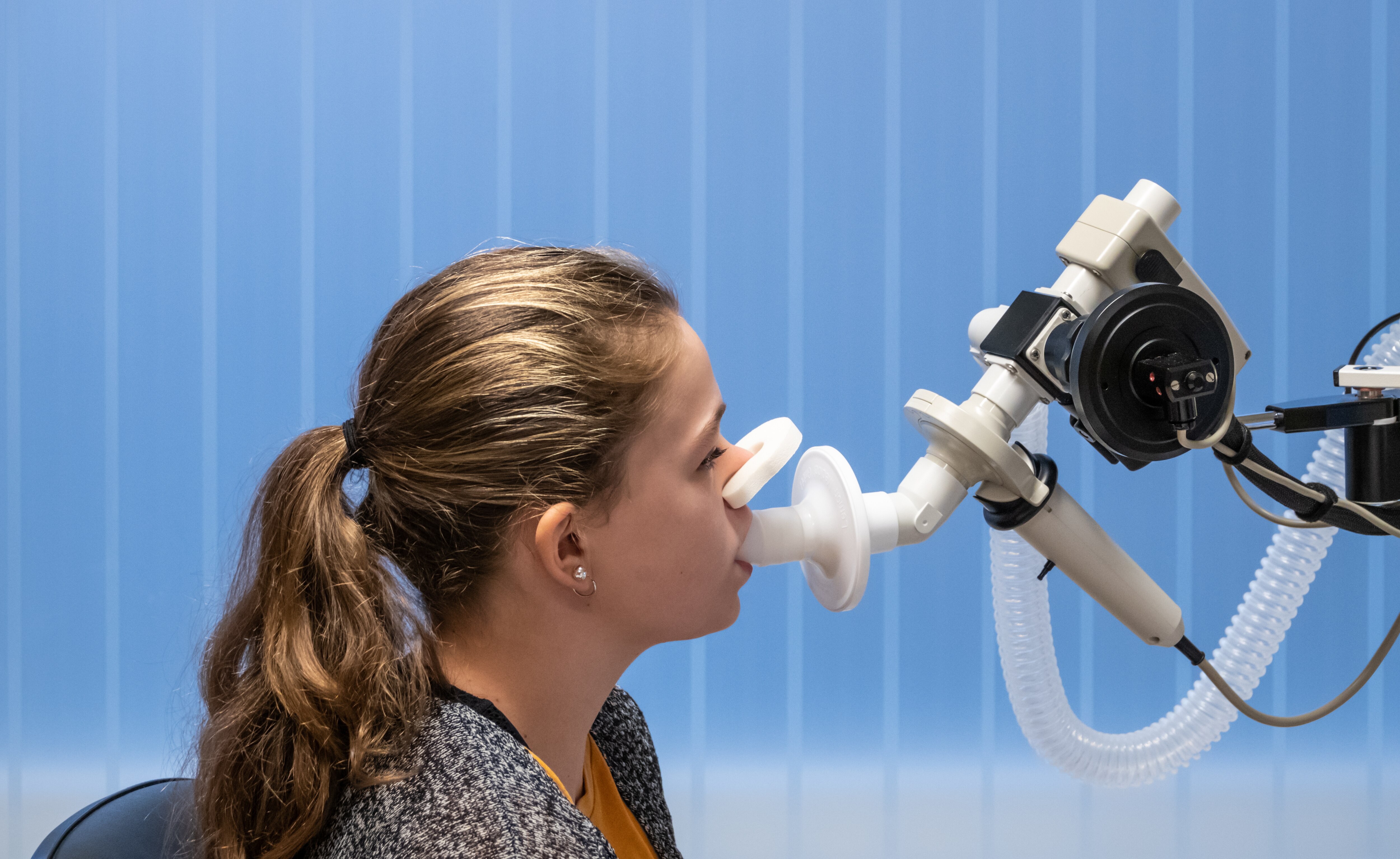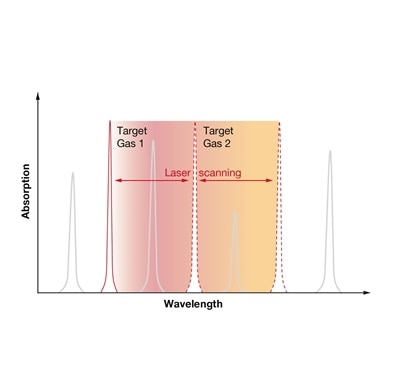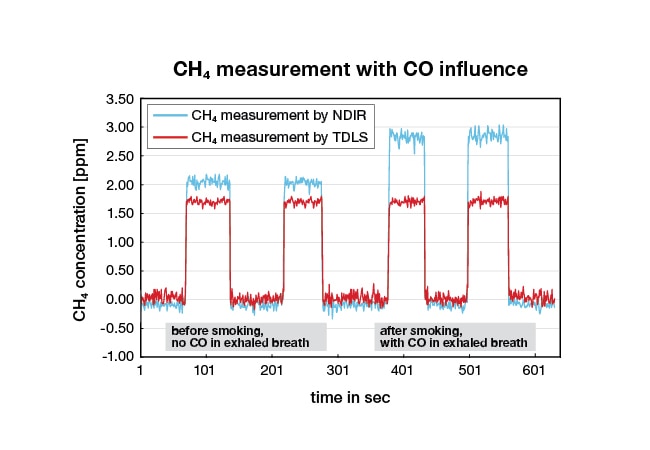

For this reason, the GC-MS technique is very popular in research and preclinical testing. However, for precise quantification of single molecules or detection of small molecules, this technique reaches its limits. In addition, GC-MS instruments are often very expensive and require highly skilled personnel to operate and, more importantly, interpret the results. End-user instruments often incorporate gas sensors based on electrochemical or semiconductor technology. These are so small and compact that they can easily be carried in a handbag. This is a great advantage for patients suffering from food intolerance, for example. They can operate these devices completely independently before and after meals. The sensors are based on the principle of a chemical or physical reaction between the target gas and the reactive sensor surface. As a result, they age very quickly or change their properties over time, which is why these devices need to be regularly recalibrated or even replaced. Furthermore, a reaction with other gases cannot be ruled out, which can lead to cross-sensitivity of the target gas to be measured.

This technique uses broadband infrared sources such as Axetris' EMIRS, which image a very large portion of the infrared spectrum. The appropriate target gas is then localized using suitable bandpass filters. The fact that these filters still allow some spectrum to pass makes cross-sensitivity to other gases an issue depending on the application. Therefore, this technique is primarily used for applications where the expected amount of target gases is in the percentage range. Axetris' laser gas detection (LGD) modules are based on TDLS (Tunable Diode Laser Spectroscopy) and are used for the detection of gas molecules in the infrared spectral range. The main advantage of TDLS is the specified wavelength of the laser, which allows the target gas to be focused precisely without interference from other gases.

With the TDLS technique, the response time depends mainly on the gas flow and the volume of the measuring cell. The LGD Compact was designed with a very small gas cell with a volume of just 19 ml. This allows continuous real-time monitoring even at the smallest gas flows of less than 500 ml/min. Since the wavelength of the laser is precisely matched to the target gas, cross-sensitivities to other gases can be avoided or compensated for through an additional measurement. A good example of this is CO in the air smokers breathe. With the NDIR, CO peaks in the vicinity of CH4 cause cross interference and thus falsify the results (see figure). With the TDLS technology, on the other hand, the methane measurement is free from CO cross interference. Since the TDLS technology is very robust and provides stable measurement results over many years without the need for recalibration, keeping operating costs at very low levels. In summary, the TDLS technology in the LGD Compact is perfect for the detection of smaller molecules, making it a viable solution for clinical use. However, for clinical research and home care, the currently established technologies are certainly to be preferred. Each submarket here has its specific requirements that cannot be covered by a single technology.

Among other things, hydrogen is produced in the process, which is also detected in diagnostics. There is a large proportion of people who convert this hydrogen into methane. If only hydrogen is measured in a breath analysis test, false-negative results can occur. When such a condition is suspected, patients often spend many hours in the doctor's office taking multiple breath measurements after a test meal. Since such metabolic processes often take place over a period of time, the course of the measurement curve is just as important as the absolute measured values. The possibility of continuous measurement with the LGD Compact allows the metabolic process to be analyzed within seconds. In addition to methane, the LGD Compact also offers the possibility to measure CO₂ as a second gas. Depending on the intensity of exhalation, the CO₂ content and thus that of methane varies. Therefore, CO₂ is often used as a correction factor in respiratory gas analysis. Due to the ability to tune the laser, it is often possible to measure multiple gases if the spectral position of the gas peaks fits. This is how the Axetris LGD can add value by eliminating the need for another sensor component for normalization.